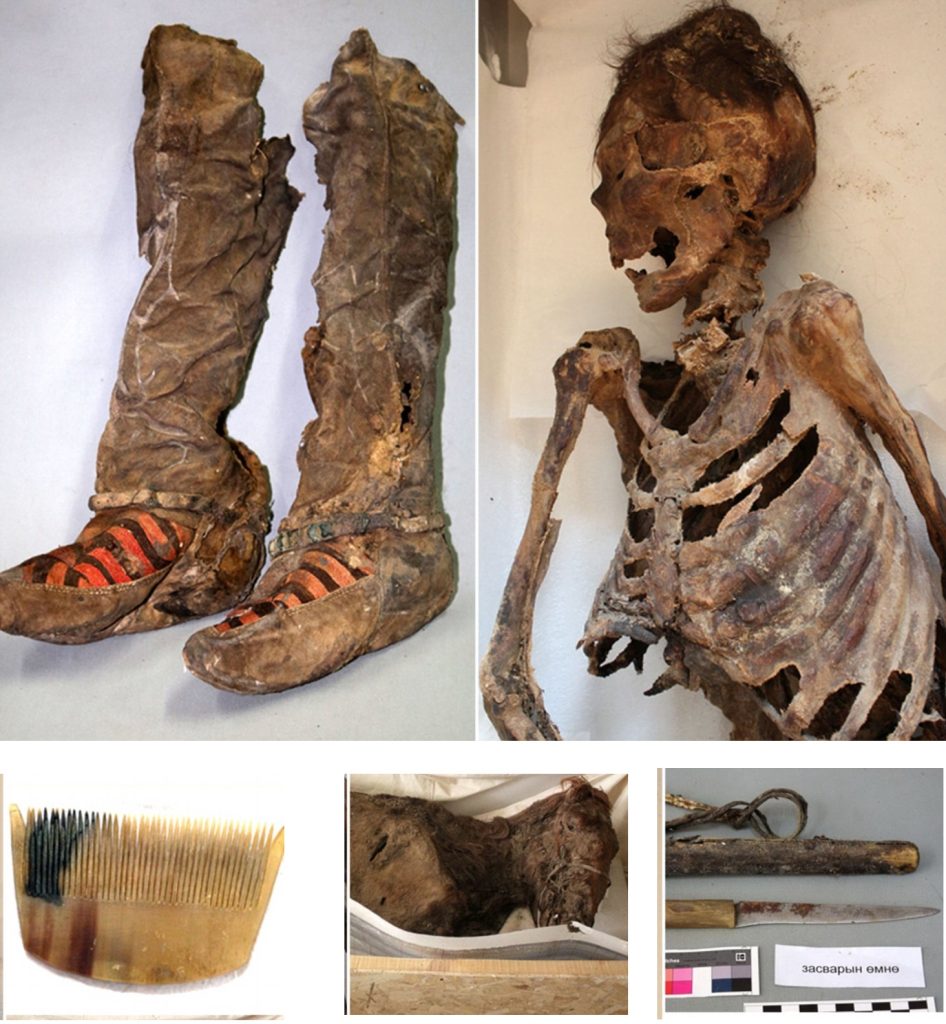In a monumental breakthrough for the field of archaeology, a team of seasoned researchers has uncovered a remarkably well-preserved 1,100-year-old mummy high in the Altai Mountains, a remote region known for its rugged terrain and harsh climate. This discovery is not only significant due to its age but also because of the extraordinary condition in which the mummy and accompanying artifacts were found. The remains, identified as those of a woman estimated to be between 30 and 40 years old at the time of her death, offer a rare and intimate glimpse into the life of an ancient nomadic civilization that once thrived in this challenging environment. The preservation and context of this find have captivated scholars around the world, promising to reshape our understanding of ancient Central Asian cultures.

What sets this discovery apart is the exceptional preservation of not only the human remains but also the artifacts buried with them. One of the most astonishing items recovered was a pair of boots, still intact after more than a millennium. These boots, crafted with intricate detail and precision, reflect a level of technical skill and artistry that speaks volumes about the capabilities of the society from which they originated. The stitching, the materials used, and the overall design of the footwear suggest that these were not merely functional items but also objects of aesthetic value, perhaps even indicative of status. Furthermore, the sophistication of these boots hints at the possibility of long-distance trade, as some of the materials appear to be non-native to the immediate region, pointing to the existence of trade routes and exchanges that connected this nomadic group to a broader network of civilizations.
Alongside the footwear, archaeologists found a collection of personal items that offer a more nuanced view of the woman’s daily life. A finely made wooden comb, carefully carved with symmetrical patterns, suggests the value placed on personal grooming and appearance, even in a nomadic society accustomed to constant movement and survival in a rugged landscape. Nearby, a well-preserved knife hints at the practical necessities of daily life—food preparation, protection, or crafting—and serves as a testament to the resourcefulness required in such an environment. Perhaps most intriguing is a leather bag found near the mummy, the contents of which are still being analyzed. Early examinations suggest that it may contain medicinal herbs or small personal keepsakes, offering further clues into the woman’s lifestyle, health practices, and possibly her role within her community.
The presence of horse remains and a carefully positioned saddle within the burial site adds another layer of complexity to this archaeological narrative. In nomadic cultures, horses were not only essential for transportation and warfare but also held immense symbolic value. Their inclusion in burial rites typically signified honor, wealth, and high social standing. The fact that this woman was buried with a horse strongly implies that she was a person of elite status, potentially a leader, healer, or someone revered within her tribe. This detail also underscores the cultural significance of horses as both practical assets and spiritual companions, believed to guide the deceased into the afterlife. The craftsmanship of the saddle and associated tack further highlights the attention to detail and respect afforded to the dead in this society, reflecting deep-rooted spiritual beliefs and ceremonial practices.
The state of preservation seen in this discovery can largely be credited to the unique environmental conditions of the Altai Mountains. The cold, arid climate has acted as a natural preservative, preventing the decomposition that typically affects organic materials such as textiles, leather, and even human tissue. This rare combination of factors has allowed archaeologists to study these ancient materials with an unprecedented level of detail. Analysis of the textiles, for instance, reveals weaving techniques that were highly advanced for their time, utilizing patterns and dyes that reflect both artistic expression and technical expertise. The ability to examine these materials so thoroughly provides scholars with invaluable insights into the day-to-day lives, technological capabilities, and aesthetic values of these ancient people.
Beyond its immediate archaeological value, this discovery has broader implications for our understanding of ancient nomadic societies in Central Asia. Often viewed through the lens of their more sedentary counterparts, nomadic cultures have sometimes been perceived as less advanced or structured. However, findings like this challenge that narrative, showcasing a civilization that was not only resilient and adaptive but also highly sophisticated in its social organization, craftsmanship, and spiritual practices. The artifacts and remains suggest a society capable of navigating the complexities of trade, artistry, and survival in one of the world’s most unforgiving environments.
As researchers continue to analyze the artifacts and remains, each new piece of data contributes to a growing body of knowledge about this enigmatic society. Radiocarbon dating, DNA analysis, and further examination of the artifacts’ composition will likely provide deeper insights into migration patterns, trade connections, health conditions, and even the genetic lineage of this ancient population. The story of this woman—her life, her death, and the community that honored her with such a detailed burial—serves as a powerful reminder of the depth and richness of human history that remains to be uncovered.
This archaeological marvel not only bridges a gap between past and present but also reinforces the importance of preserving and studying such sites. Through careful excavation and respectful analysis, the legacy of these ancient people can be shared with the world, offering enduring lessons in resilience, creativity, and cultural expression. In the face of modern challenges, the study of such ancient societies provides context and inspiration, reminding us of humanity’s enduring capacity to adapt, thrive, and create meaning even in the most demanding of environments.





